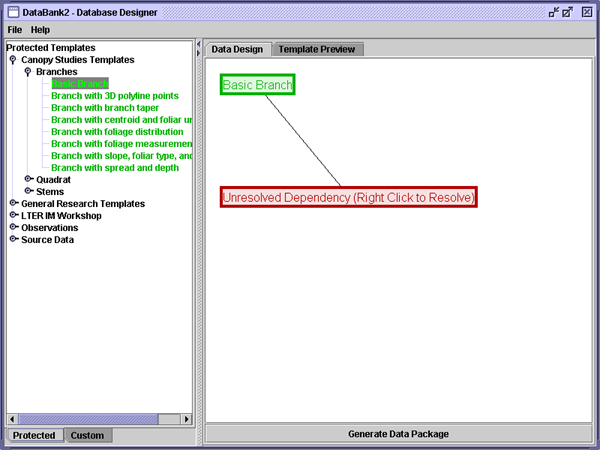Welcome to the Canopy DataBank Database Generator
 DataBank helps ecologists design normalized relational databases with build-in data-entry forms, along with metadata files, including the equivalent of a data dictionary. Rather than construct the various tables of a relational database by hand, column by column, DataBank users can create a database by laying together one or more pre-existing database components that have been built to represent objects encountered in the user's domain of research.
DataBank helps ecologists design normalized relational databases with build-in data-entry forms, along with metadata files, including the equivalent of a data dictionary. Rather than construct the various tables of a relational database by hand, column by column, DataBank users can create a database by laying together one or more pre-existing database components that have been built to represent objects encountered in the user's domain of research.
This means that frequently-occurring database pieces can be defined once, then used in multiple separate databases; that a set of attributes that are regularly observed and recorded for more than one type of object under study can be isolated and stored as a free-standing unit; that the lower-level details of the final database needn't be kept constantly in mind while the design is being laid out; and that a user's design can be used to produce other files such as Ecological Metadata Language (EML) documents.
- Download DataBank so you can create your own field database from templates.
- Read more about the Canopy Database Project.
Because DataBank databases are built on components that other tools also know, those tools can provide considerable added power. See our data visualization tool CanopyView.
If you have any questions or comments about the tools or the websites please contact us at: scidb@evergreen.edu.
